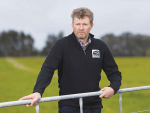The Government has announced the next steps in its agricultural emissions pricing plan.
The controversial plan was first released in October and will see farm emissions priced at the farm-level.
The section 215 report released today outlines a number of changes to the proposed emissions pricing plan which the Government claims will give greater certainty for farmers and better recognition of on-farm sequestration.
Prime Minister Jacinda Ardern says that after listening to farmers and growers during the consultation that ended last month, and engaging with industry leaders, the Government has taken the next steps to establish the proposed farm-level emissions reduction system as an alternative to the Emissions Trading Scheme (ETS) backstop.
“Our shared goal is supporting farmers to grow their exports, reduce emissions, and maintain out agricultural sectors international competitive edge into the future,” Ardern says. “By continuing to work through our different positions together, we move close to achieving long-term consensus on a plan that works.”
Ardern says the most important thing will be getting an emissions reduction system set up that lasts.
“We are working hard alongside the agriculture sector to strike the balance between building good levels of sector buy in, while also ensuring the system is robust and meets our emissions reductions goals.”
There has been a mixed reaction to the report with some saying it was headed in the right direction and others saying the changes are not enough.
He Waka Eke Noa (HWEN) Climate Action Partnership chair Sarah Patterson says the Section 215 report confirms that HWEN has been successful in putting the case for a farm-level split-gas levy instead of including agriculture in the ETS.
“It shows the Government is listening to sector and Māori views and is taking action to address concerns. This shows the value of working together,” Patterson says.
DairyNZ chair Jim van der Poel says the changes announced today are more closely aligned with what HWEN proposed in July this year.
However, he says the devil is in the detail and the industry will work to gain clarity and changes where necessary.
“Farmers are already facing huge cost pressures with rising interest rates and on-farm inflation driven by feed, fuel and chemical prices. Emissions pricing is going to add yet another cost, so it's important we continue work to achieve emissions reductions in a fair, practical and equitable way,” says van der Poel.
“Throughout this entire process, DairyNZ has maintained that ‘no deal is better than a bad deal’ and we would never accept an emissions pricing system that would put our farmers or rural communities at risk – and we stand by that.”
Meanwhile, the Meat Industry Association (MIA) says it is cautiously optimistic about the Government’s changes to the emissions pricing proposal, but remains opposed to the prospect of an interim processor-level levy.
MIA chair and Nathan Guy says that over the past few months, the red meat sector has worked hard alongside other primary sector groups to reach agreement on key aspects of the system for pricing agricultural emissions and overall his organisation believes the Government is taking a sensible approach.
“The Government’s report confirms much of the approach put forward by the He Waka Eke Noa partnership and this is promising. However, there are still a number of issues that need to be worked through to ensure the system can deliver on its objectives,” Guy says.
“A key area that warrants further work and clarification is how exactly sequestration will be accounted for and rewarded within the emissions pricing system. This is a critical aspect and farmers must be able to count all genuine sequestration on farm.”
Federated Farmers, who earlier this year chose not to support the HWEN submission to Government, say the ‘vague’ improvements to the pricing plan are not enough.
Federated Farmers national president and climate change spokesperson says the response in the section 215 report is so high level, “we may not be able to clearly understand the detail until we actually see it when introduced as legislation next year”.
He says his organisation remains firm in what it said in its submission, “that without a review of the methane targets based on what is required for warming neutrality and for methane to contribute no additional warming, we will not be giving our support to any pricing mechanism”.
“Considering what is at stake, vague promises of an obscure future review with unknown terms of reference are simply not good enough”.
"We need targets based on the NZ context, so farmers know what we really need to do to play our fair part in the global sense,” Hoggard says. “This does not exclude us going beyond those targets if that is what customers want, or technologies come about that enable us to do more, and we should be open to that, but this shouldn't be via regulation it should be through markets signals, or so that farmers are rewarded for going above and beyond, these regulations offer no carrots only a lighter stick for going over and above."



















